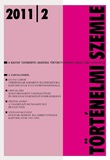A piactól az árucsarnokig. Kereskedelmi célra készült épületek a középkori Budán
From Market to Commercial Hall. Trading Buildings in Medieval Buda
Author(s): Judit BendaSubject(s): History
Published by: Magyar Tudományos Akadémia Bölcsészettudományi Kutatóközpont Történettudományi Intézet
Summary/Abstract: It is in the Lawbook of Buda and in medieval charters that we can read about buildings constructed for business activities as points of geographical orientation. The question thus emerges of where these buildings were located, and whether they are still standing. A comparison of the data collection relating to the topography of medieval Buda with the mural research documentation prepared in connection with the monument reconstruction work in the 1950s, 1960s and 1970s has helped to identify a great number of buildings used for commercial purposes. This work has been facilitated by the interpretation of the results of archeological investigations, contemporary engravings and maps as well. The outlook of the shops run by merchants engaged in the same activity became unified by both prescriptions and function, and so such locations can easily be identified and distinguished. The terms used for designating merchants – kramer, kammerherr, gewölbherr–also allude clearly to that architecturally distinctive type of shop (kram, camera, gewölbe), where their activity was carried on. The market place, which had been empty at the time of the town’s foundation in the 13th century, was gradually filled by small stone-walled shops in the course of the next century. The so-called krame, that is, merchant shops, which mainly survived underground, but in some cases also in the basement walls, can be ranked into three basic types: small two-room shops (fig. 4/A), one-room shops of middling size, and large, three-room „trading houses” can be distinguished from each other. In front of the merchant shops two long buildings were erected at the end of the 14th century, which we identify with the house of the butcheries of the German butchers’ guild. As for the bakers of bread and rolls, their shops are known from a manuscript drawing, which shows a two-storey building of unusual architectural structure, containing four (or five) small rooms with separate entrances from the street. At Buda the shops of apothecaries and cloth traders occupied the front room of the burgher houses, and business was carried on through a shopwindow which looked onto the marketplace. For the wholesalers attached sitting niches to the exterior wall of their vaulted shops, and the entrance of the shop could be approached through a few steps just beside. The bales of long-distance merchants were unpacked in a great storing hall.
Journal: Történelmi Szemle
- Issue Year: 2011
- Issue No: 02
- Page Range: 259-282
- Page Count: 24
- Language: Hungarian

